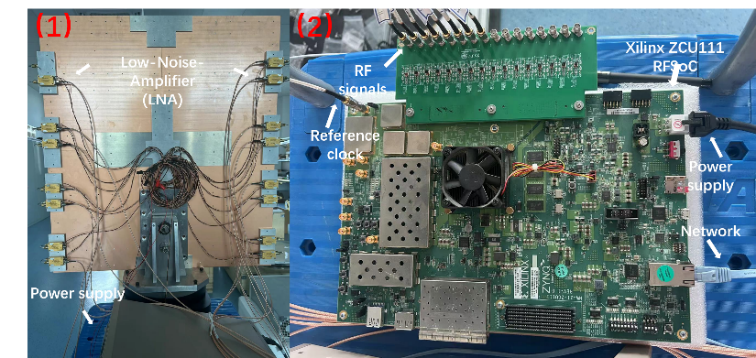Recently, PhD student WU Peng and his collaborators from the Xinjiang Astronomical Observatory (XAO) of the Chinese Academy of Sciences successfully demonstrated one of the core functions of phased array feeds (PAF)—the digital beamforming technology.
The PAF’s array of miniature feeds resembles the intricate compound eyes of a bee, while the function of the digital beamforming technology is like the visual nervous system behind these eyes. It precisely regulates the "vision" sensitivity of the telescope, determining its ability to penetrate the depths of space.
The results were published in Research in Astronomy and Astrophysics.
Engineers from the Xinjiang Key Laboratory of Microwave technology group at XAO are developing a new type of radio astronomy observation equipment called "PAF Receivers", which could significantly improve the sky survey speed of radio telescopes. This equipment uses an array of miniature feeds, with each feed carefully controlled to form multiple independent observation beams. These fields can point in different directions simultaneously, thereby achieving a wider field of view and faster survey speed.
The engineers established an experimental platform that includes a microstrip antenna array, low-noise amplifiers, and a high-performance Radio Frequency System-on-Chip. Using digital signal processing technology, they successfully achieved digital beamforming for the PAF, drawing a two-dimensional power image.
This experiment represents the first successful laboratory application of digital beamforming technology, setting the stage for the development of wideband multi-beamforming technologies in the future.

Figure 1:(1) Microstrip antenna array;(2) Zynq UltraScale+ RFSoC ZCU111 board

Figure 2:(1) Simulation beam;(2) Active measurement beam;(3) Passive measurement beam